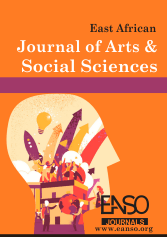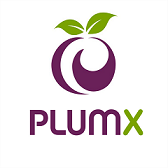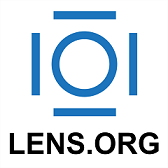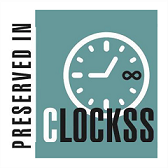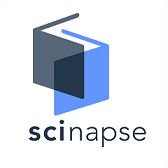Exploring the Nature and Impact of USE Capitation Grants in Secondary Education
Abstract
The study examined the contribution of USE Capitation Grants in Secondary schools in Lira City. The study objective was to assess the nature of USE Capitation Grants in secondary schools in Lira city. The study population was 88 people, and the sample size was 72 people, which was chosen using purposive and simple random sampling. The study used a cross-sectional and correlational design, with an overall response rate of 88.31%. Data were collected using a questionnaire survey. Key USE capitation grants covered tuition fees and scholastic materials, and the findings revealed that USE capitation grants covered tuition fees and scholastic materials. With regards to the level of performance, USE capitation grants on the level of students' enrollment, the average results indicated a high level of staff retention ( = 4.30, s = 0.73), USE capitation grants on the level of staff retention, the average results indicated a high level of staff retention ( = 3.48, s = 1.11) and USE capitation grants on the level of infrastructural development, the average results indicated a very high level of infrastructural development ( = 4.1961, s = 0.7605). The findings show that there is a strong and significant correlation between USE Capitation grants and performance of private secondary schools in Lira city (r= 0.800, p < 0.01). The study concluded that there is a USE capitation grant that covered tuition fees and scholastic materials, there is a very high level of Performance of Private Secondary Schools, and a strong, significant correlation between USE Capitation grants and performance of private secondary schools in Lira city. The study therefore recommends that secondary schools should set up income generation projects within the schools, for example, piggery, mushroom growing projects, amongst others, to help diversify their sources of income
Downloads
References
Abolade, S.B. and Oyelade, A.F. (2017). Historical Development of Science and Technology Education in Nigeria: Issues, Challenges and Prospects. Makerere Journal of Higher Education 9(2):41-49. DOI:10.4314/majohe.v9i2.3.
Ahimbisibwe, P. (2017, October). UNEB introduces a new system to grade schools. The New Vision.
Ahimbisibwe, P. (2017, October). UNEB introduces a new system to grade schools. Retrieved from The New Vision: http://www.monitor.co.ug/News/Education/Uneb-introduces-new-system-grade-schools/688336-4137612-smcmp4/index.html
Amandu, D. (2016). Factors affecting the academic performance of students in Uganda Certificate of Education (UCE) under Universal Secondary Education (USE) schools in Uganda: a case of Koboko district. Kampala: Uganda Management Institute.
Amin, M. (2005). Social Research Conception: Methodology and Analysis. Kampala: Makerere Printery.
Ashley, D., Mcloughlin, C., Aslam, M., Engel, J., Wales, J., Rawal, S., . . . Kingdon, G. (2014). The role and impact of private schools in developing countries: a rigorous review of the evidence. DFID Research for Development.
Bank, W. (2018). Uganda Secondary Education Expansion Project (P166570): Project Information Document/ Integrated Safeguards Data Sheet (PID/ISDS). World Bank.
Barungi, M. (2017, August 31). Does the government have to abandon aiding private USE schools? Daily Monitor.
Bashir, S., M, L., Ninan, D., & Tan, J. (2017). Facing Forward: Schooling with Learning in Africa. Washington, DC: World Bank.
Belleflamme, P., Lambert, T. and Schwienbacher, A. (2012). Crowdfunding: Tapping the Right Crowd. SSRN Electronic Journal 29(5). DOI:10.2139/ssrn.1578175.
Bunmi, O. (2007). Effect of Leadership Style on Job-Related Tension and Psychological Sense of Community in Work Organizations: A Case Study of Four Organizations in Lagos State, Nigeria. Bangladesh e-Journal of Sociology.
Cacciattolo, M. (2015). Ethical considerations in research. The Praxis of English Language Teaching and Learning (PELT): Beyond the Binaries: Researching Critically in EFL Classrooms. 55–73.
Cherry, K. (2010). Lewin’s Leadership Styles: Three major styles of leadership. England: Pearson Publishers Limited.
Crawfurd, L. (2017). School Management and Public-Private Partnerships in Uganda. Kampala: Rise.
Cronbach, L. (1946). Response sets and tests are validating. Journal for Educational & Psychological Measurement, 475 - 494.
Ensiyaitu, K. (2018). Effects of Students’ Strikes on Academic Performance in Secondary Schools in Uganda: A Case of Secondary Schools in Ntugamo District. Kampala: Kyambogo University.
GOU. (2017). Education and Sports Strategic Plan 2017-20. Kampala, Uganda: Ministry of Education and Sports.
Hackman, M., & Johnson, C. (2009). Authoritarian Leadership: A Communication Perspective. Long Grove: Waveland Press.
Hamiza, O., & Francis, T. M. (2020). Modern Day Leadership and Sustainability of Private Secondary Schools in ARUA Municipality, Uganda. International Journal of Academic Research in Business.
Hersey, P., & Blanchard, K. (1985). Leadership and the One Minute Manager. New York: William Morrow & Company.
Huylebroeck, Lisa, & Kristof, T. (2015). Universal Secondary Education (USE) in Uganda: blessing or curse? The impact of USE on educational attainment and performance. University Press Antwerp, 349-372.
ISER. (2019). Status of Implementation of SDG 4 on Education: Is Uganda on Track? Kampala, Uganda: Initiative for Social and Economic Rights (ISER).
Ishengoma, J. (2008). Financing public higher education in Tanzania: Towards a new model and implications for development and retention of the next generations of academics. A paper presented at the University Forum: Next generation of Academics. Accra, Ghana.
James, J. W., Donald, B., & Christopher, B. (2008). Private Secondary Education in Uganda: Implications for Planning. Researchgate.
Kothari, C. R. (2009). Research Methodology. New Delhi: New Age International Publishing Ltd.
Krejcie, R., & Morgan, D. (1970). Determining Sample Size for Research Activities. Economic Psychological Measurement, 607 - 610.
Kwame, A., Delprato, M., Mindano, G., Lewin, K., & Sentengo, J. (2018). The Effectiveness and Efficiency of Secondary Education in Sub-Saharan Africa: Eessa Project: The Case of Uganda. University of Sussex.
Lamptey, A. (1994). Financing higher education in Africa: A marketing perspective. Dakar: UNESCO. BREDA Series No. 5.
Lewin, K. (2018). Feasibility Study for the Establishment of the African Education Fund: Final Report. African Development Bank and Association for the Development if Education in Africa. Abidjan: Cote d’Ivoire and Japan Trist Fund.
Ludwig, V. (1973). General System Theory. New York: George Braziller.
Makhuzeni, B., & Barkhuizen, E. (2015). The effect of a total rewards strategy on school teachers’ retention. SA Journal of Human Resource.
McLeod, S. (2018). Questionnaires. Retrieved from http://www.simplypsychology.org/maslow.html
McMahon, W.W. (2009). Higher learning, greater good the private and social benefits of higher education. Baltimore, MD Johns Hopkins University Press.
MoES. (2010). Frequently Asked Questions (FAQs). Kampala: Ministry of Education and Sports.
MoES. (2016). Annual Performance Report, FY16-17. Kampala: Education and Sports Sector.
MoES. (2018). National school inspection report 2013 – 2017. Kamapala, Uganda: Ministry of Education and Sports.
Mohajan, H. K. (2017). Two Criteria for Good Measurements in Research: Validity and Reliability. Annals of Spiru Haret University.Economic Series, 59–82.
Monazza, A., & Shenila, R. (2018). Public-Private Partnerships and Private Actors in Secondary Education in Sub-Saharan Africa. Mastercard Foundation.
Muwanguzi, S.E., Musisi, B. and Itaaga, N. (2021). The Pervasiveness of Multi-School Teaching (MST) among Public Secondary Schools in Wakiso District (Uganda): Pedagogical Dilemmas, Handling and Way Forward. American Journal of Educational Research, vol. 9, no. 8 (2021): 522-531. doi: 10.12691/education-9-8-9.
Nakalanzi, P. (2019). An investigation of the factors that influence students’ participation in strike actions: a case study of year two students at the School of Statistics and Planning. Kampala: Makerere University.
Nakalyakaani, A., & Ssali, M. (2020). School Branding and Student Enrolment in Private Secondary Schools in Iganga Municipality, Uganda. Interdisciplinary Journal of Education.
O’Donoghue, J., Crawfurd, L., Makaaru, J., Otieno, P., & Perakis, R. (2018). A review of Uganda’s Universal Secondary Education Public Private Partnership programme. Education Partnership Group.
Oketch, M. (2003). Market model for financing higher education in sub-Saharan Africa: Examples from Kenya. Higher Education, 313-332.
Omoeva, C., & Gale, C. (2016). Universal, but not free: Household schooling costs and equity effects of Uganda’s Universal Secondary Education policy. International Journal of Educational Development, 41-50.
Pretorious, E.J. and Spaull, N. (2019). Still Falling at the First Hurdle: Examining Early Grade Reading in South Africa. DOI:10.1007/978-3-030-18811-5_8. In book: South African Schooling: The Enigma of Inequality (pp.147-168).
Richard, A. (2016). Pay more so that teachers stay in the advantaged schools. Paper presentation at the conference. London.
Rothstein, J. (2015). Teacher quality policy when supply matters. American Economic Review, 100 - 130.
UNESCO. (2018). Education Response Plan for Refugees and Host Communities in Uganda. UNESCO Institute of Statistics.
UPPET. (2012). Ministry of Education and Sports procurement and implementation manual for civil works. Kampala.
Walford, G. (2008): Faith-based schools in England after 10 years of Tony Blair. Oxford Review of Education 34 (6), p. 689–699.
Weihrich, H. (2008). Management. A global and entrepreneurial perspective. New Delhi: McGraw-Hill.
Zeyu, X. (2001). An overview of private education development in modern China. Occasional Paper (http://www.ncspe.org). (ERIC Document Reproduction Service No. ED 462 736).
Copyright (c) 2025 Bovine Teddy Yon, Gloria Lamaro

This work is licensed under a Creative Commons Attribution 4.0 International License.

